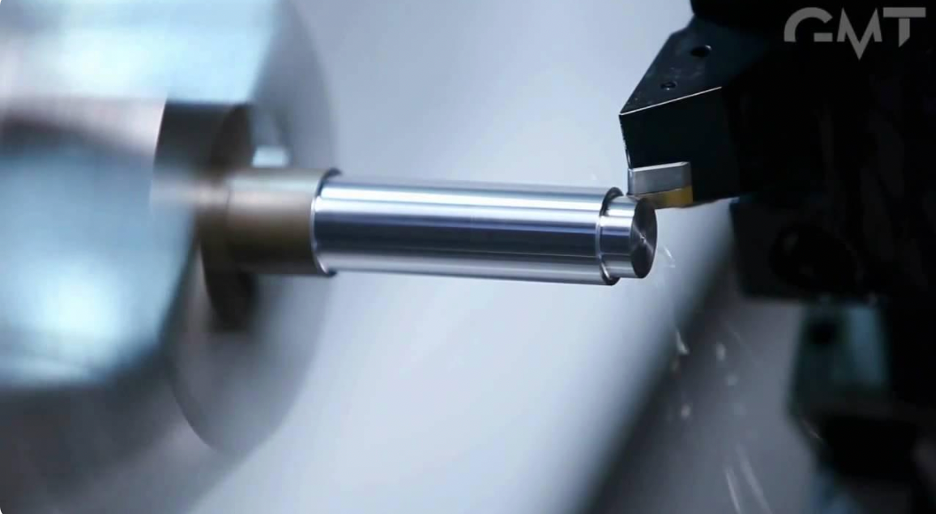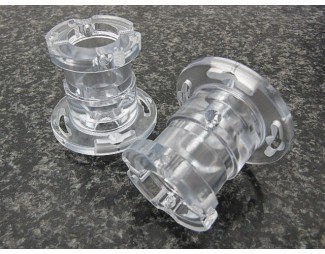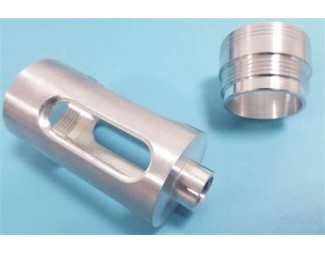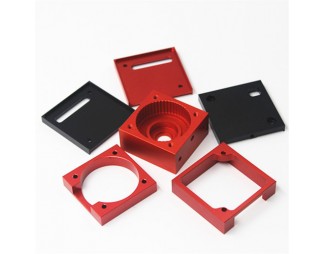What is the Difference Between a CNC Lathe and a CNC Turn
In the world of precision manufacturing, Computer Numerical Control (CNC) machines have revolutionised the way we produce complex parts with high accuracy and efficiency. Two terms that often come up in discussions about CNC machining are “CNC lathe” and “CNC turn.”
While these terms are sometimes used interchangeably, there are subtle differences between the two that can impact their applications and capabilities in various manufacturing scenarios.
What is a CNC Lathe?
A CNC lathe is a computer-controlled machine tool used to perform various turning operations on cylindrical workpieces. It’s an evolution of the traditional manual lathe, incorporating computer control to automate the cutting process and achieve higher precision and productivity.
In a CNC lathe, the workpiece is held in a chuck and rotated at high speeds while cutting tools move along one or more axes to remove material and shape the part. The computer control allows for complex geometries to be produced with consistency and accuracy that would be difficult or impossible to achieve manually.
Features
- Spindle
The heart of a CNC lathe is its spindle, which holds and rotates the workpiece. CNC lathes typically have powerful spindle motors capable of high rotational speeds, often ranging from 2,000 to 6,000 RPM or more.
- Tool Turret
CNC lathes feature a tool turret that can hold multiple cutting tools. This allows for quick tool changes during the machining process, reducing downtime and increasing efficiency.
- Axis Control
Most basic CNC lathes operate on two primary axes – X and Z. The X-axis controls the tool’s movement towards or away from the centerline of the workpiece, while the Z-axis controls the tool’s movement parallel to the spindle axis.
- Chuck
The chuck is responsible for securely holding the workpiece during machining. CNC lathes often use three-jaw or four-jaw chucks, depending on the shape and size of the workpiece.
- Tailstock
Many CNC lathes include a tailstock, which can provide additional support for long workpieces or be used for drilling operations along the centerline of the part.
- Control System
The CNC control system is the brain of the machine, interpreting G-code instructions and coordinating the movement of all axes and functions.
- Coolant System
To manage heat generation during cutting, CNC lathes are equipped with coolant systems that flood the cutting area with coolant or cutting fluid.
Pros
-
CNC lathes can achieve very tight tolerances, often within a few thousandths of an inch or less, ensuring consistent part quality.
- Once a program is created and optimised, CNC lathes can produce identical parts repeatedly, making them ideal for production runs.
- Automated tool changes and continuous operation allow for faster production compared to manual lathes.
- CNC control enables the creation of complex profiles and features that would be difficult or impossible to achieve manually.
- A single operator can oversee multiple CNC lathes, reducing labour costs compared to manual machining.
Cons
- CNC lathes represent a significant capital investment, which can be a barrier for smaller shops or startups.
- The addition of electronic controls and servo motors increases the complexity of maintenance and potential points of failure.
What is CNC Turn?
A CNC turn, more commonly known as a CNC turning centre, is an advanced machining system that builds upon the capabilities of a basic CNC lathe.
While it performs the same fundamental turning operations, a CNC turning centre typically offers enhanced functionality, and additional axes of motion, and often integrates milling capabilities, allowing for more complex parts to be produced in a single setup.
Features
- Multi-Axis Capability
Unlike basic CNC lathes, turning centres often feature additional axes of motion. Many are equipped with a Y-axis, allowing for off-centre milling and drilling operations. Some advanced models may have B-axis tool positioning for even greater flexibility.
- Live Tooling
CNC turning centres frequently incorporate live tooling capabilities. This means that some tools in the turret can rotate independently, enabling milling, drilling, and other operations typically associated with machining centres.
- Sub-Spindle
Many turning centres feature a sub-spindle or secondary spindle. This allows for back-working operations, where the part can be transferred to the sub-spindle for machining on the reverse side without manual intervention.
- Automatic Tool Changer
While CNC lathes have tool turrets, advanced turning centres may have larger capacity tool magazines or even robotic tool changers for extended unmanned operation.
- Integrated Measurement Systems
Some high-end turning centres incorporate in-process measuring systems, allowing for real-time quality control and adaptive machining.
- Advanced Control Systems
CNC turning centres often feature more sophisticated control systems with enhanced programming capabilities, simulation features, and networking options.
- Chip Management
Given their capability for extended operations, turning centres usually have more advanced chip evacuation systems, sometimes including chip conveyors and high-pressure coolant systems.
Pros
- The ability to perform both turning and milling operations in a single setup significantly increases the range of parts that can be produced.
- Complex parts that would require multiple setups on different machines can often be completed in one setup on a turning centre.
- Performing all operations in one setup eliminates errors that can occur when transferring parts between machines.
- The combination of multiple operations and reduced setup time leads to faster overall production, especially for complex parts.
- A single turning centre can often replace multiple standalone machines, saving valuable floor space in the shop.
Cons
- The increased functionality comes with added complexity in both programming and maintenance.
- Operators require more extensive training to fully utilise the capabilities of a turning centre, especially for complex multi-axis operations.
CNC Lathe vs CNC Turn: Key Differences Comparison
While CNC lathes and CNC turning centres share the same fundamental purpose of creating rotationally symmetric parts, they differ in several key aspects. Understanding these differences is crucial for manufacturers to make informed decisions about which machine is best suited for their specific needs.
Complexity and Versatility
A CNC lathe is a specialized machine tool designed primarily for rotational machining. It excels at creating cylindrical shapes through the controlled movement of cutting tools along the X and Z axes. While highly efficient for turning operations, its capabilities are generally limited to these two dimensions.
A CNC turn, often referred to as a CNC turning centre, is a more advanced machine that expands upon the lathe’s functionality. By incorporating additional axes, such as the Y-axis for horizontal movement and sometimes the B-axis for tilting, CNC turns can execute a wider range of complex machining processes.
Tooling Capabilities
Typically a CNC lathe employs a tool turret equipped with static cutting tools. These tools are fixed in position and primarily designed for turning operations. While efficient for creating cylindrical shapes, the lathe’s tooling configuration limits its capabilities to rotational machining.
Whereas a CNC turn incorporates live tooling, a feature that significantly enhances its machining versatility. Live tools are capable of rotation, allowing them to perform milling, drilling, and other operations in addition to turning. This dynamic tooling setup enables the creation of complex parts with various features in a single setup.
Spindle Configuration
In general, a CNC lathe features a single main spindle. This spindle rotates the workpiece, and the cutting tools are moved with it to remove material. This configuration is well-suited for producing cylindrical parts with basic geometries.
Compared to that, a CNC turn often incorporates both a main spindle and a sub-spindle. The main spindle holds the workpiece for primary machining operations, while the sub-spindle can load and unload parts or perform secondary operations simultaneously.
Part Complexity
A CNC lathe is best suited for producing parts with relatively simple geometries. Primarily designed for turning operations, it excels at creating cylindrical shapes and basic contours. While it can handle some variations and features, its capabilities are generally limited to rotational machining.
A CNC turn, on the other hand, is capable of producing far more complex parts. By combining turning, milling, and drilling operations in a single setup, it can create intricate shapes with multiple features and dimensions. This versatility makes it the preferred choice for manufacturing components that require a high degree of precision and accuracy.
Setup and Operation
A CNC lathe is generally simpler to set up and operate compared to a CNC turn. Its focused capabilities and relatively straightforward tooling configuration often require less complex programming. This makes it a suitable choice for operators with less extensive CNC experience.
A CNC turn typically demands a more intricate setup process due to its expanded capabilities. Programming for multiple axes, live tooling, and complex part geometries can be more involved.
If you are short on time then we would recommend checking out this quick comparison table to get a proper understanding of the two machines.
|
Feature |
CNC Lathe |
CNC Turn |
|
Complexity and Versatility |
Specialized for turning, limited to X and Z axes |
Versatile, with additional axes for complex machining |
|
Tooling Capabilities |
Static tool turret for turning |
Live tooling for turning, milling, drilling, and more |
|
Spindle Configuration |
Single main spindle |
The main spindle and often a sub-spindle |
|
Part Complexity |
Best for simpler, cylindrical parts |
Capable of producing complex parts with multiple features |
|
Setup and Operation |
Simpler setup and programming |
More complex setup and programming, but often single-setup completion |
|
Production Efficiency |
Efficient for high-volume, simple parts |
Efficient for complex parts, reducing cycle times |
|
Ideal Applications |
High-volume production of simple turned parts |
Complex parts in aerospace, medical, and custom engineering |
|
Initial Investment |
Lower initial cost |
Higher initial cost due to advanced features |
|
Operating Costs |
Lower operating costs due to simpler design |
Higher operating costs due to complex machinery |
Conclusion
To conclude, knowing what is the difference between a CNC lathe and a CNC turn helps you choose the right mode of machining for your projects. From this guide, you have the perfect gateway to figure out which service will work out better for you.
If we give you a quick suggestion, then it would be to choose the CNC lathe if you are just starting out, and choose the CNC turn if you are thinking of setting up a business already.

If you have any prototyping project please feel free to contact: enquiry@abcrapid.com.
Search
Recent Post













